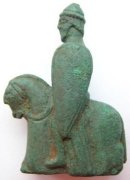|










|
Some artifacts found by archaeologists have been claimed
to be Chess pieces. However it is difficult to accept when
the found piece is isolated. Few different pieces, as the
part of a set, constitute the minimum to claim that is a
Chess set without any doubt.
Here are some famous finds. Several could
have been Chess pieces, which would drastically change our
view of the game history (such as the Dalverzin-Tepe
pieces). Others are probably not Chess pieces at all (such
as the Butrint one).
|
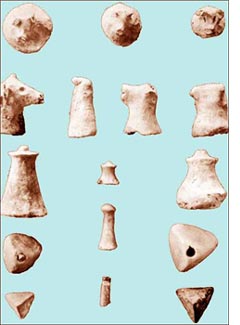
Terracotta pieces excavated in
Lothal, an harappan site in India. A
complete set of terracotta game pieces has been
found. Lothal was destroyed
around 1900 BC which will constitute a very
early date if the intended game were Chess.
|
|

Elephant and Bull (or Knight
or Vizier ?), ivory , dated as early as 2nd c.
AD, found at Dalverzin-Tepe,
Southern Uzbekistan. Their use is unknown,
some scholars think they can be game pieces.
Institute of Scientific Art, Tashkent
|
|
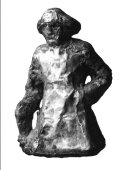
Kushan piece from the 1st –
2nd century AD discovered in Dalversin-Tepe. It
is probably intended to represent a charioteer
and the dress is similar to that of Kushan
royalty. However it is dissimilar to votary
pieces and the flattened base indicates its use
for games (though perhaps not chess). (Many
thanks to Gerhard Josten and Robert Bracey)
|
|

Brownish terracotta
elephant (H:4.6 cm) from Kanauj,
India, about 4th c.
|
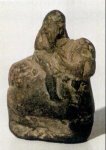
Terracotta
Knight from Afghanistan or Northern
India, early 6th c., Germany, private collection
(Photo from M. Eder).
|
|

Elephant in carved black
stone, about 7th c, Persia, which might be a
Chess piece. Metropolitan Museum of Art, New
York.
|
|
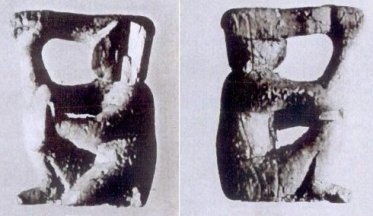
Ivory warrior, Ctesiphon (Iraq). H: 3 cm
6-7th c. Pergamon-Museum, Berlin
|
|
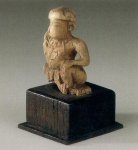
Assumed to be a fragment of a Chess piece,
probably the head of a King, found at Afrasiab,
ivory, 7-8th c.
Ermitage, St Petersburg, Russia
|
|

The controversial recent finding in Butrint
excavation (Albania). Is that a Chess piece ? I
don't think it can be. See dedicated page here.
|
|
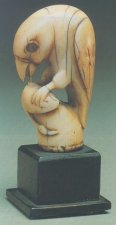
A Rukh, fantastic bird of prey,
found in Ferghana, 8 to 10th c.
Ermitage, St Petersburg, Russia. (Personally, I
strongly doubt that this is a Chess piece : a
phial cork or a walking stick handle? This is
also the opinion prevailing at the chess expert
group led by Manfred Eder.
|
|

Gaming piece (chess?, I think more probably
nard), Western Islamic Lands, ivory, 9th-11th c.
The Metropolitan Museum of Art
|

Gaming piece (chess?, nard?), glass
millefiori, Nishapur (Iran), 9-10th c.,
Staatliche Museen zu Berlin, Museum für
Islamische Kunst
|
|

Elephant in ivory which was
once presented as belonging to the "Charlemagne set"
although from a different origin : India,
9 or 10th century. With its large size,
160x88 mm, it is not even sure that it is a
chessmen.
|
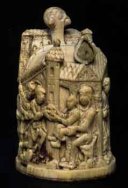
Queen or reliquary,
ivory, East of France (Reims?), 1075-1100. Musée
National du Moyen Âge, Cluny, France
|
|

King on an ivory disc, 1150
to 1230, found in Staraya Ryazan, Ryazan
Regional Local History Museum. Found with plain
discs which are assumed to be pawn. If it is a
Chess piece, it is a rare example of piece on a
disc like for Chinese Xiangqi.
In my opinion, it could also belong
to a Viking game like Hnefatafl
|
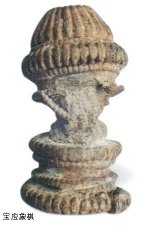
This artefact was given as "Baoying
Xiangqi" piece on a blog authored by Peter Sung, a
respected authority for Xiangqi from Toronto, Canada.
Any further information (estimated date, size, place of
find, etc.) will be appreciated
|



















